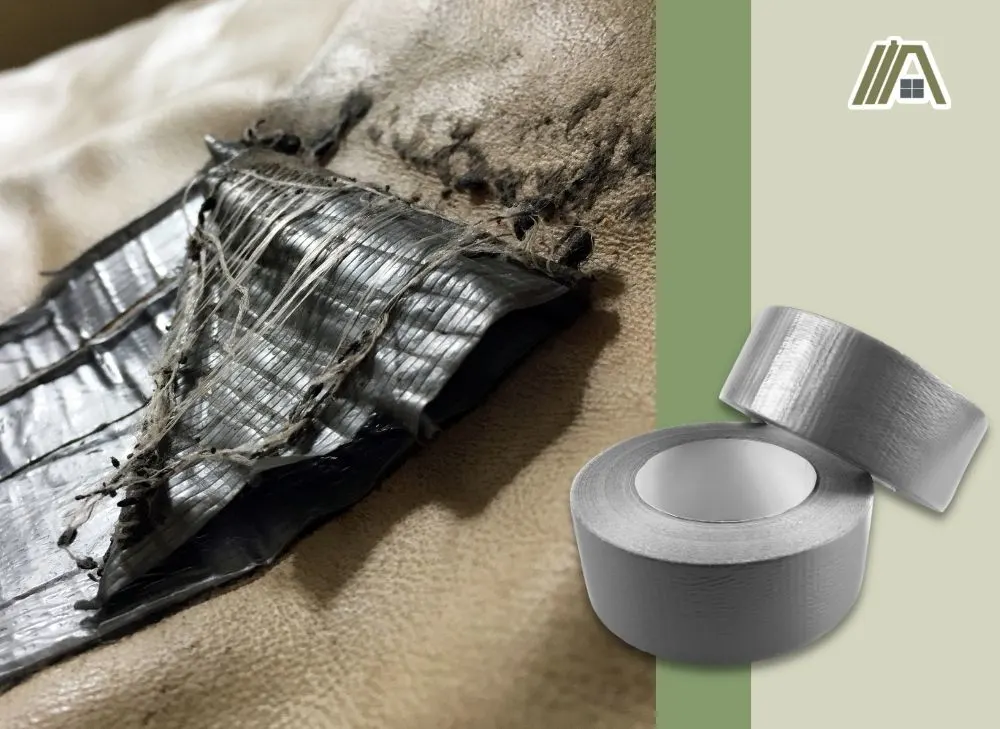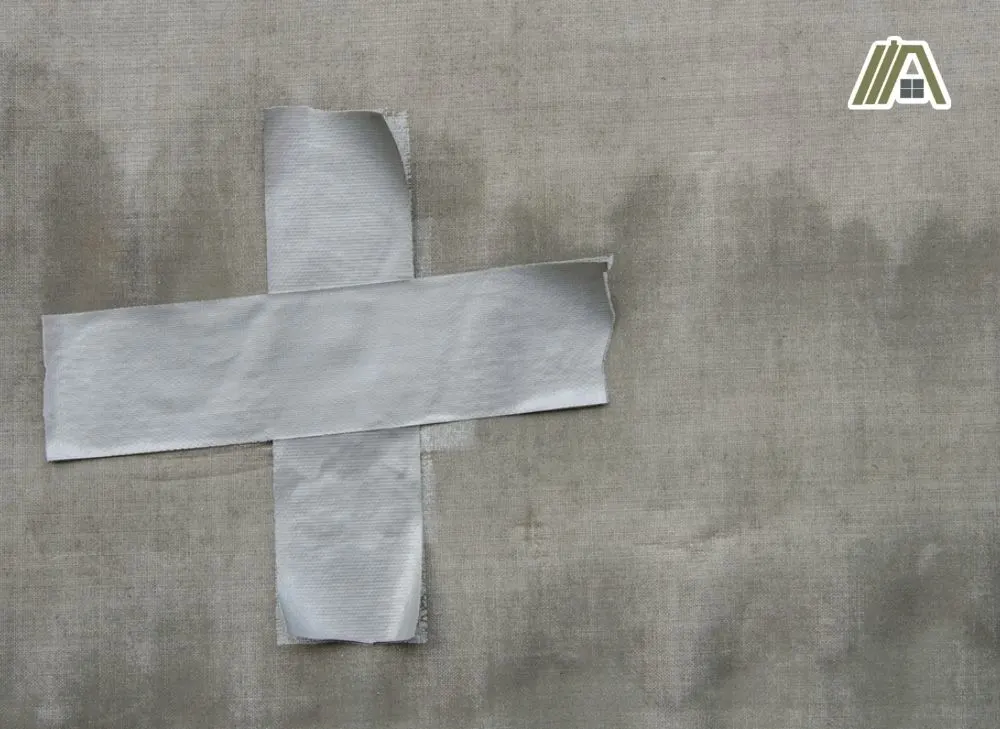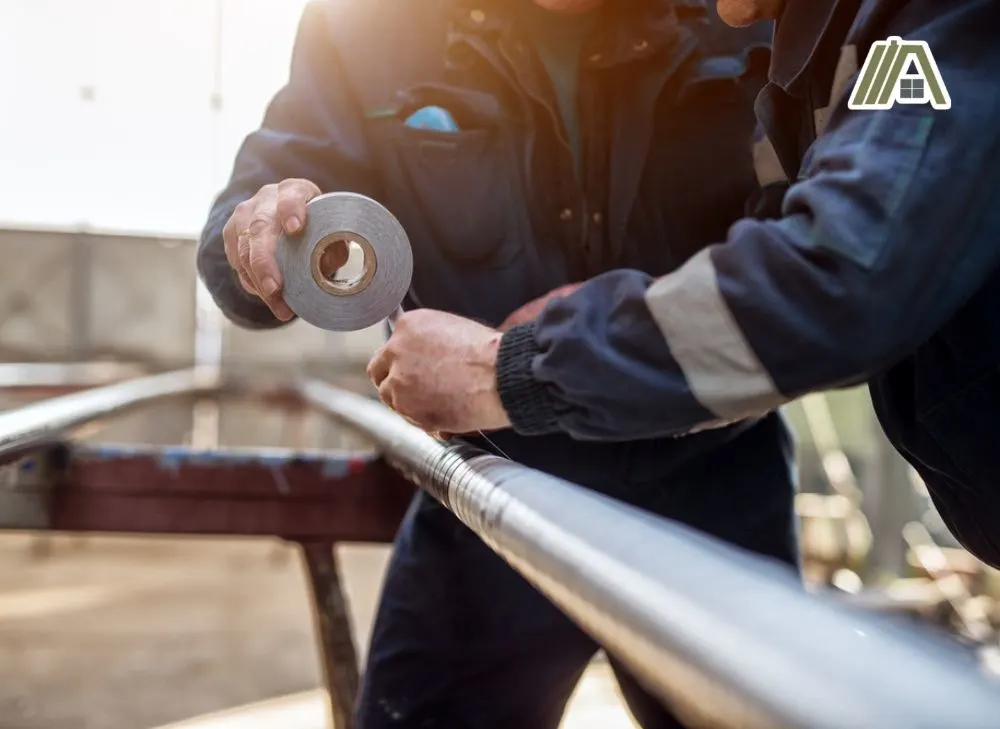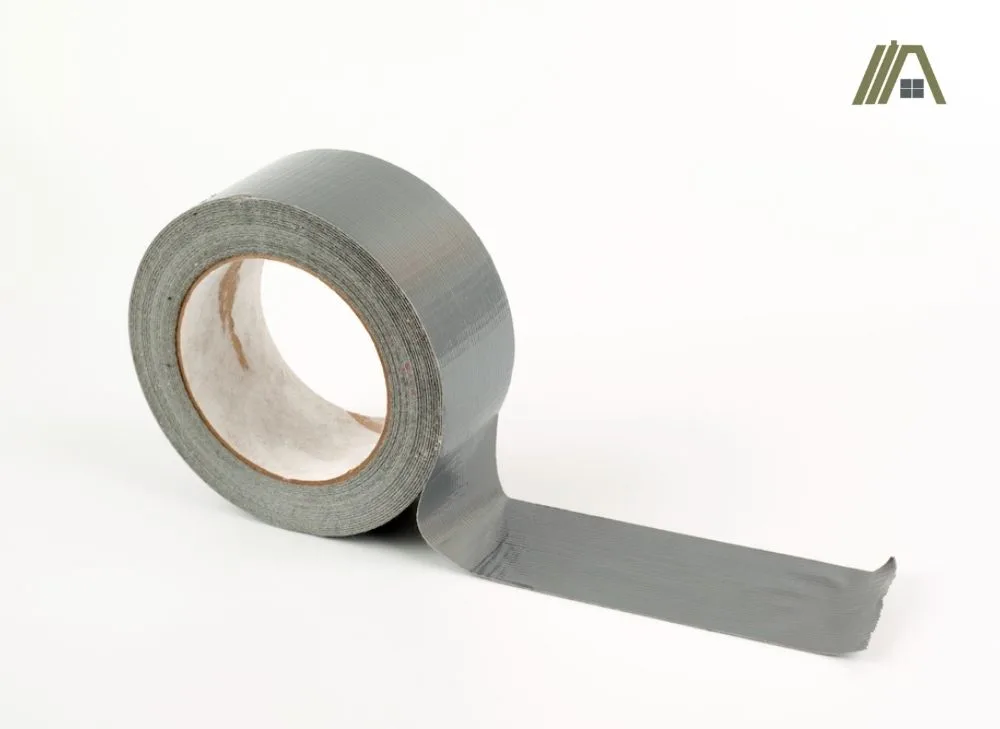Duct tape seems to be a tool that is presented as a miracle fixer-upper. I know, growing up, whenever something broke, my first reaction was to get duct tape and slap some on! It is important to realize, though, that duct tape is not always suitable depending on the situation in which it is used.
While duct tape is a sort of jack-of-all-trades, it doesn’t work well everywhere. Knowing when and where to use duct tape will make your fixes more effective and longer lasting.

Duct tape can last indefinitely on smooth surfaces; ± 60 days when exposed to intermittent moisture; ±7 days in extreme heat and cold or on dusty/hairy surfaces; less than a month with bending/twisting, sunlight, and abrasions (edges or adhesive); and a few hours when submerged or on rough surfaces.
Extreme Heat
Duct tape subjected to extreme heat (temperatures greater than 140 °F) will experience notable deficits in how long it lasts. This is because, at temperatures above 140 °F, the adhesive will begin to soften and won’t adhere as well.
At temperatures above 180 °F, the adhesive will start to melt, and the rubber components of the tape could also become structurally unsound.

While there is no clear and straightforward answer to how long duct tape will last when applied, in good conditions, it seems the general consensus is that duct tape can last anywhere from 6 months to indefinitely.
In the case of extreme heat, duct tape shouldn’t be expected to last more than a day because the adhesive is compromised. The tape may last longer if applied before the extreme temperatures take place.
But once the extreme temperatures start, the tape’s days are numbered.
Intense Cold
Duct tape doesn’t work very well in intense cold, either. This is because the adhesive can start to freeze and will lose its stickiness. This is to say that duct tape won’t be as effective once temperatures get below freezing.
The tape may stick longer if placed before the freezing temperatures start. But once the freezing temperatures hit, the tape will most likely only last a few days.
If the tape is applied in the midst of intense cold, it might be a challenge to get the tape to stick at all. The temperature of the surface also plays a role in this. If the air temperature is cool but the surface is at or below freezing, the tape will still have a hard time sticking.
Moisture
Duct tape is water-resistant but not waterproof. When exposed to intermittent moisture, and stuck to a sheet of aluminum or plastic (an ideal surface), duct tape could last as long as 60 days.
However, when the exposure to moisture is more intense and more consistent, that time frame drops rapidly. Being submerged will make it difficult for most duct tapes to even form a bond with the surface they’re being used on.
Moisture reduces the stickiness of the adhesive, and makes it less effective overall.
Tape that is stuck to a dry surface and then exposed to moisture will most likely last longer than tape that is applied to a wet or submerged surface, but it shouldn’t be expected to last the 60 days that tape on an ideal surface with intermittent moisture can last.

For more information, you can check out our article Duct Tape | Will It Hold a Water Leak?
Sunlight
Sunlight can break down the adhesiveness of duct tape and can damage the non-sticky backing of the tape.
This is because the sunlight dries out the tape and the adhesive. Once becoming dry (whether the sticky side or the non-sticky side), the tape will most likely come loose and no longer stick to the surface to which it is applied.
How long the tape will last can depend on the intensity and duration of exposure to the sunlight. Under average temperatures and average daylight exposure, duct tape could last a few months.
The more intense the sunlight and the longer the exposure, the less life the tape will have.
Abrasion
Duct tape can withstand a fair amount of consistent rubbing and abrasion. Overall, consistent rubbing alone won’t really impact the stickiness of duct tape.
What is more relevant is the location of the rubbing and just how intense it is.
Consistent, relatively light rubbing to the back of the duct tape shouldn’t alter the six-month lifespan that was described earlier. However, rubbing at the corners of the tape can reduce its lifespan because the tape will start to get peeled off of the surface it is on.
If the abrasion is happening on the adhesive side of the tape, it will again depend on the intensity of the rubbing. Overall though, rubbing on the adhesive side will reduce the lifespan more quickly than rubbing on the backside of the tape.
This is because the adhesive is being rolled and removed. Think about how you remove sticky poster tac from a wall. That is done by rolling and kneading the leftover tac, and doing so makes removal much easier. The same happens for duct tape from abrasion on the adhesive side.
Bending/Twisting
When duct tape is used on items that bend and twist a lot, the duration it will last is greatly reduced. Again, this depends on the intensity and how often the thing is bending and twisting.
In general, though, bending and twisting will reduce the duct tape’s lifespan because it is more likely to rip and tear. Bending and twisting can also make it more difficult for the adhesive to stick to the surface.

This is easy to understand when you think about having to put bandages on parts of your body that move around and bend a lot (fingers, elbows, knees, knuckles, etc.). The adhesive isn’t as sticky because it is not always in full contact with the surface it’s touching.
It’s also constantly being pulled off the thing it is stuck to, which reduces the effectiveness of the adhesive.
For a surface that bends and twists a lot, one shouldn’t expect the duct tape to reach the six-month mark. The more often the thing bends/twists, or the more intense the movement is, the less amount of time one should expect the tape to stick.
Uneven Surfaces
Uneven surfaces are more difficult for duct tape to remain stuck to than a flat or smooth surface.
This is because of the thin layer of adhesive that is on the duct tape. This thin layer only lets the duct tape stick to the highest points of the surface that are being contacted. The more uneven the surface that the duct tape is applied to, the shorter its lifespan will be.
If duct tape were to be placed on a sidewalk, it shouldn’t be expected to last more than a few days. Surfaces like concrete and stucco are difficult surfaces for duct tape to stick to because of their uneven surfaces.
Dusty/”Hairy” Surfaces
Dusty surfaces are not good for duct tape. This, again, is partly because of the thin adhesive layer of the duct tape.
The adhesive will apply to the dust and hairs that are on the surface rather than the surface itself and will, therefore, not stick well to the surface, if at all.
Duct tape that is applied to a dusty/”hairy” surface may not stick, but if it does, it shouldn’t be expected to last more than a week. How long the tape will last really depends on just how unclean the surface is that the tape is applied to.
If the tape is placed on a clean surface that becomes dusty later, it could still be expected to last the six months that were described above. Although, if the dust starts to get under the tape, then its lifespan will be reduced.
Very Smooth Surfaces
A very smooth surface is the best type of surface for duct tape. If the surface is kept clean, out of the sun, dry, free of rubbing, non-moving, and at a moderate temperature, the tape could genuinely be expected to last indefinitely.

Smooth surfaces are the best for duct tape because they allow for all of the adhesive to come into contact with the surface the tape is meant to stick to. The lifespan of tape on a smooth surface will only be reduced through factors other than the smooth surface itself.
Smooth surfaces are also good for duct tape because it is difficult for anything to get between the tape and the surface it is stuck to. Things getting in between the tape and the surface commonly cause the tape to become unstuck.
The baseline strength of duct tape depends on the materials and quality of production and materials, all of which affect the shelf life.
Sources
https://www.echotape.com/blog/the-complete-technical-guide-to-duct-tape/
https://www.thehealthyjournal.com/faq/when-should-you-not-use-duct-tape
